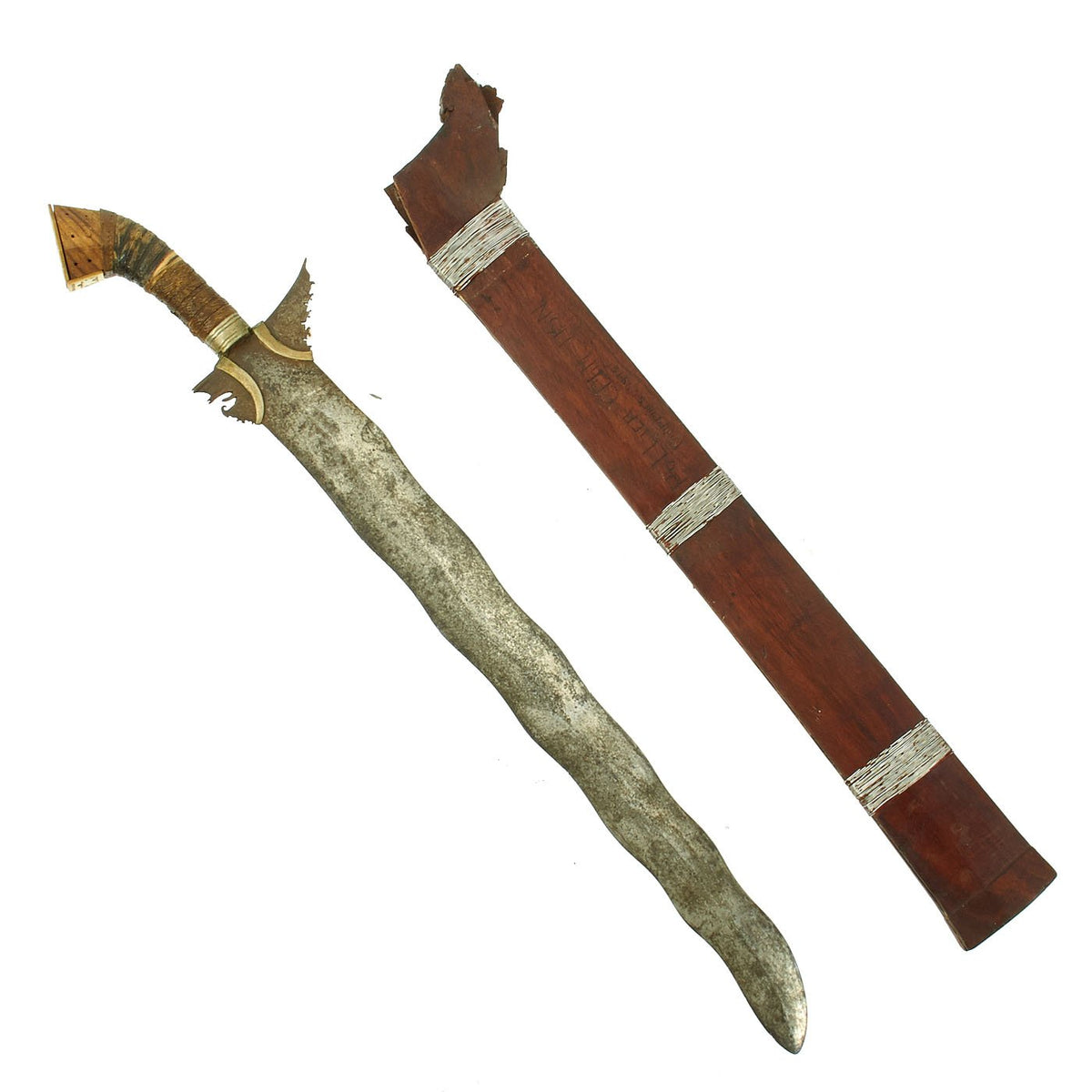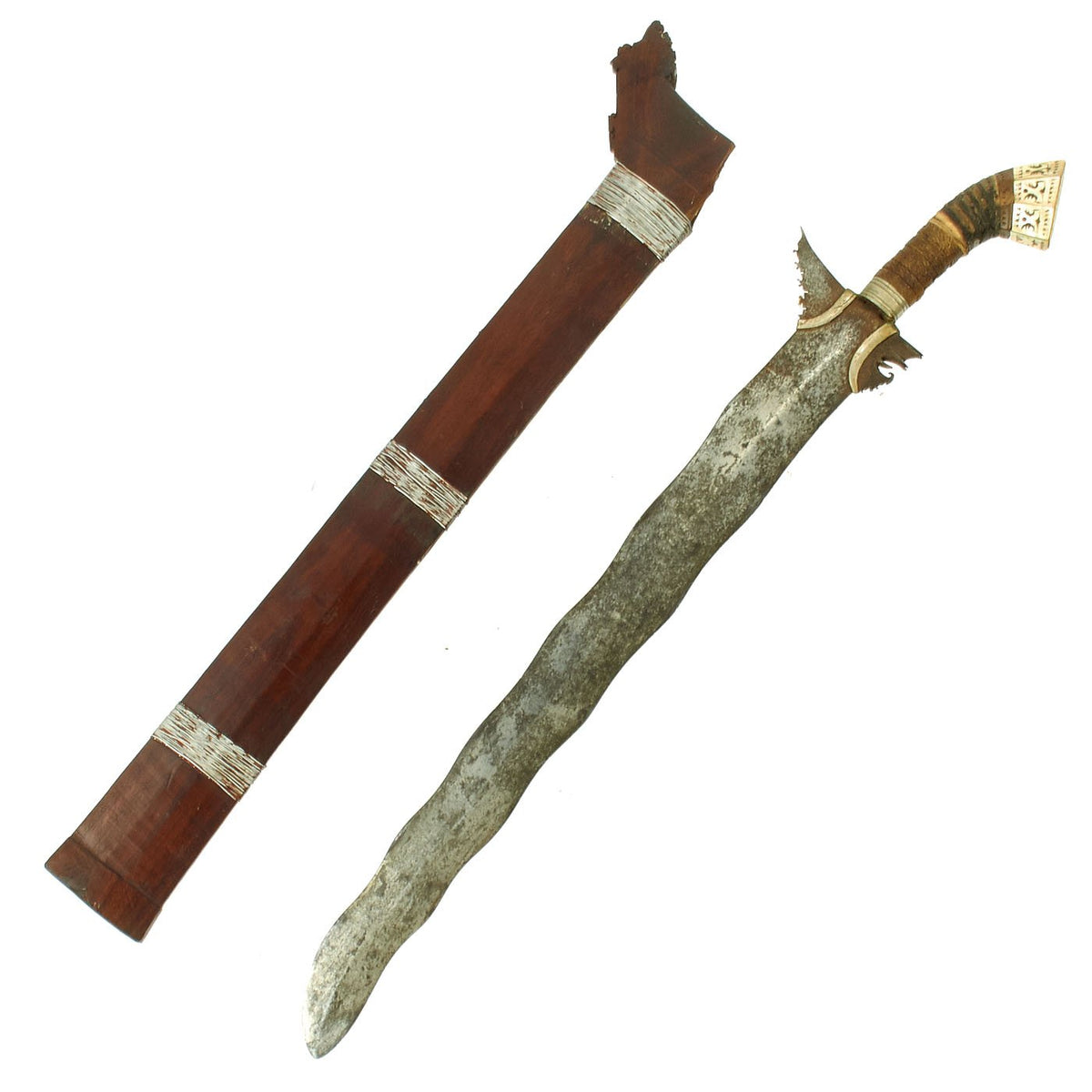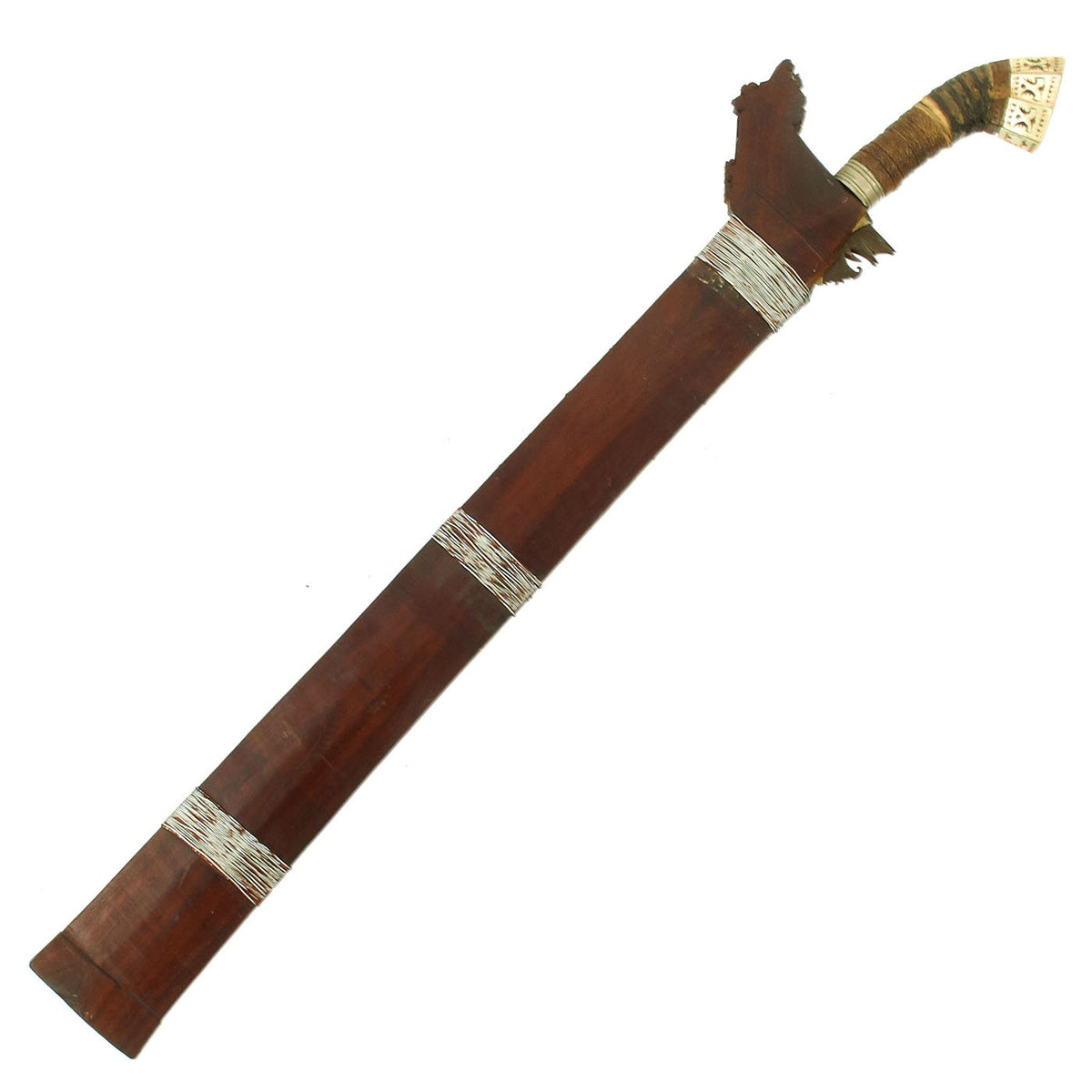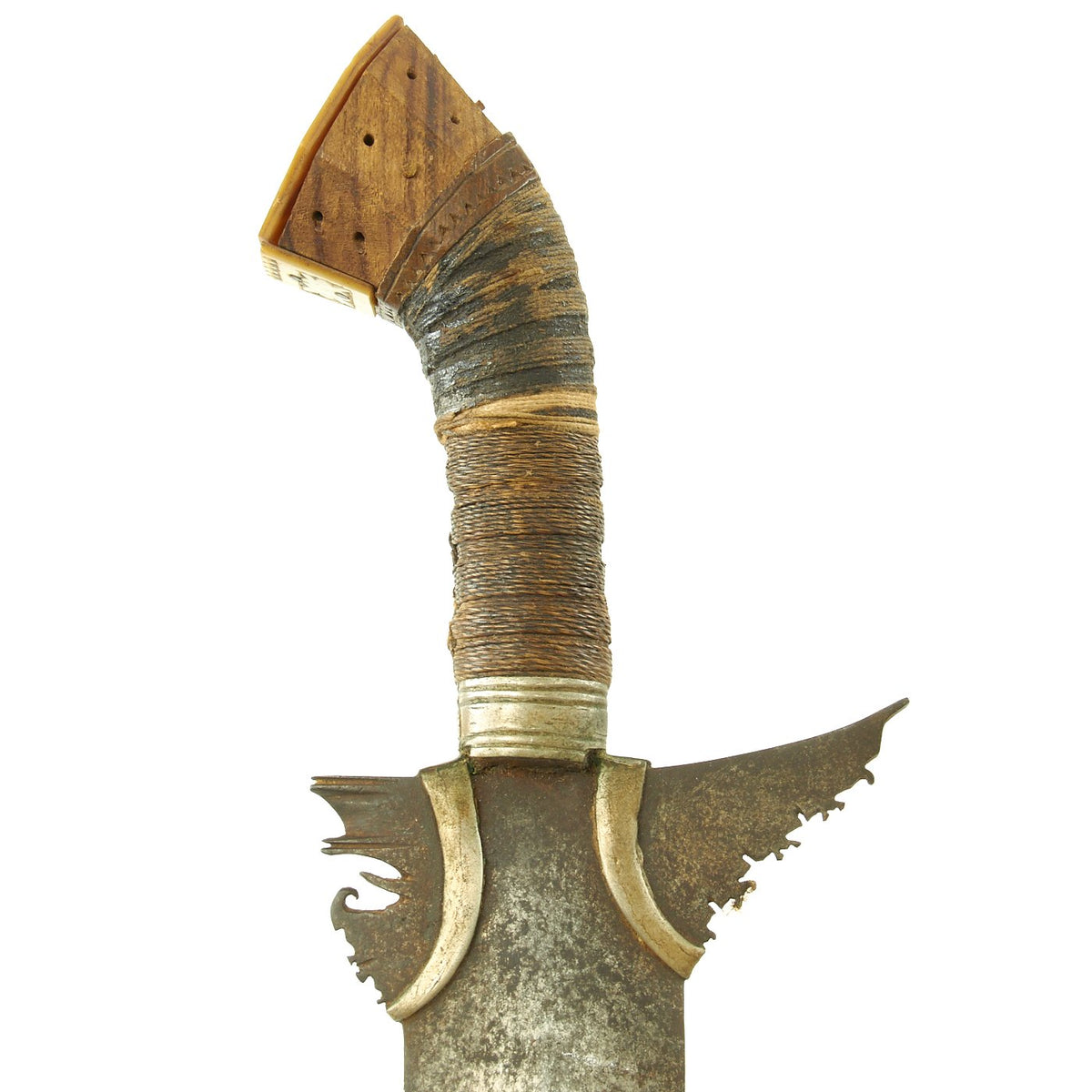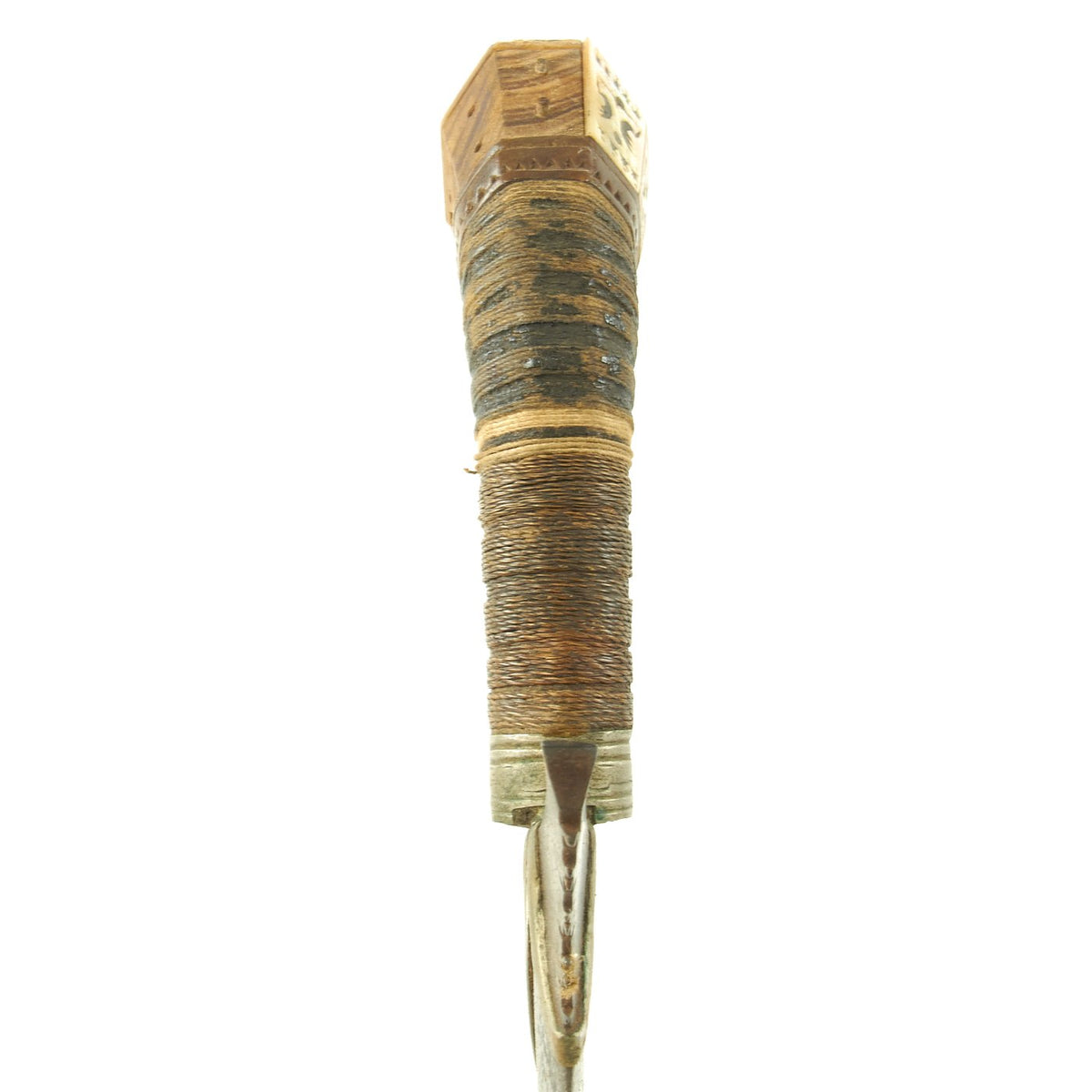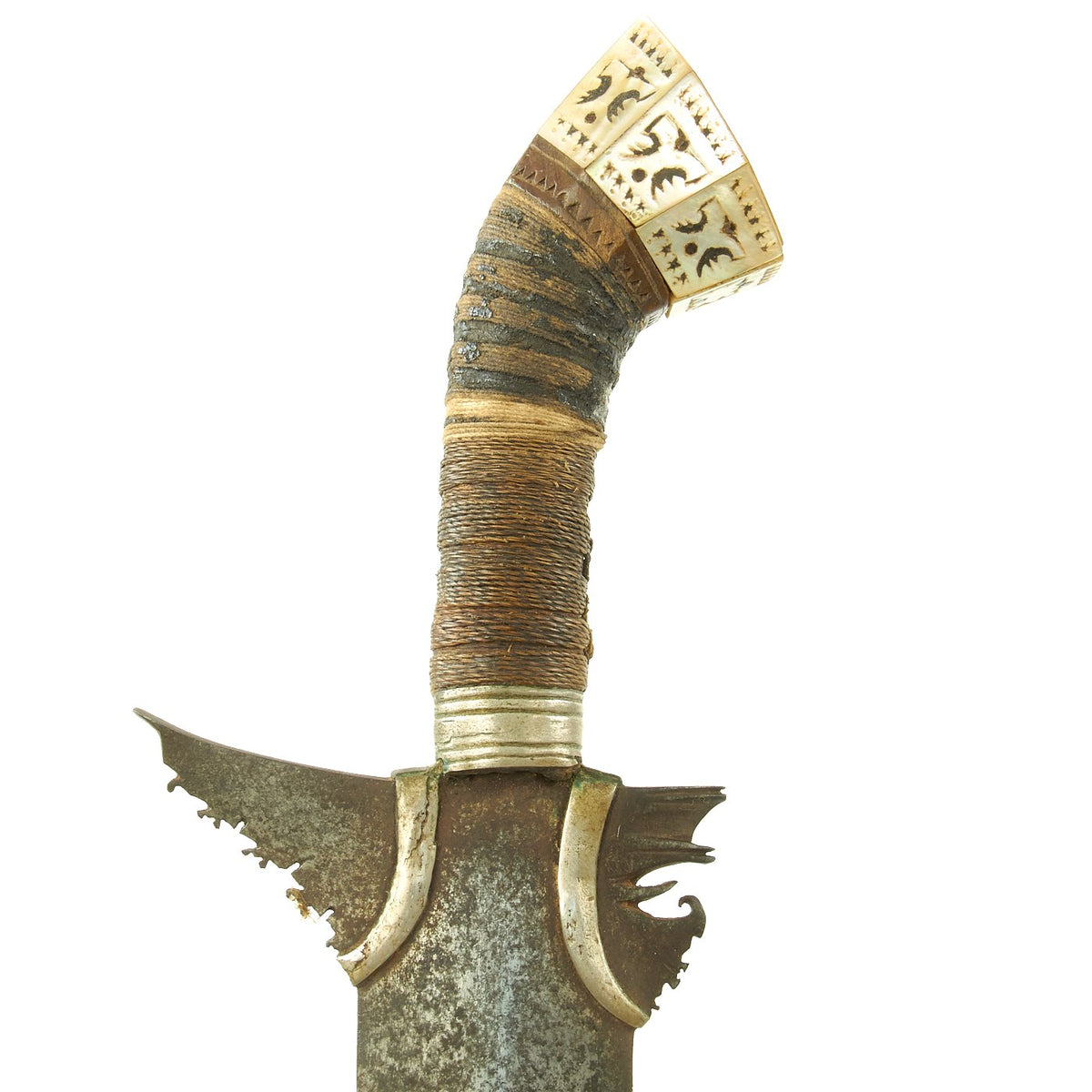Original 19th Century Moro Kris Wavy Blade Short Sword with Scabbard – Named WWII USN Bringback Original Items
$ 450,00 $ 135,00
Original Item: One Only. This is an excellent Kris style short sword from the Philippines, as used by the Moro people. The collective term Moro people or Bangsamoro people refers to the 13 Islamized ethnolinguistic groups of Mindanao, Sulu, and Palawan. They had fought against the United States during the Philippine-American War of 1899 – 1902, in which the Moro tribe rebelled against American rule. The insurrection had been going on since the early 1890s, when the Spanish still claimed the Philippines as their Colony. However, after their defeat by the United States in the Spanish American War, the Philippine islands were ceded to the U.S.. Most of the Moro tribe actually continued the struggle until their final defeat in 1913.
During WWII, The Moros fought against the Japanese occupation of Mindanao and Sulu during World War II and eventually drove them out. Also when the Japanese occupied the northern Borneo area, they also helped their relatives there in a struggle to fight off the Japanese where many of them, including women and children, were massacred after their revolt with the Chinese had been foiled by the Japanese.
When the U.S. defeated Japan and the Philippines were freed, many U.S. serviceman brought back mementos from the Islands, which sadly had suffered large losses of life due to Japanese occupation.
This short sword is made in the traditional Kris (Kalis) style and form with scabbard. The basic design is the same throughout the area, but only in the Philippine Islands did it evolve into a sword. This example dates to the 1880-1895 period, and has a 20 inch wavy double edged blade. It is 2 inches wide at its widest point. The grip is bound with string as well as twisted plant fibers, and has a lovely carved octagonal pommel. This was originally completely covered with carved mother of pearl panels, however 4 of the side panels have been lost, with the wooden retaining pins still showing. WIth the silver fittings on the blade this must have been for a very wealthy member of the Moro people.
It comes contained in the original wood scabbard nicely bound with wire in three places. This scabbard was personalized by the Sailor who brought it home:
POLLIER CPhM U.S.N.
Philippines ‘1945’
Pollier was apparently a “Chief Pharmacist’s Mate” in the U.S. Navy, and picked this up while stationed there after the island was liberated. There is some missing wood from the top of the scabbard, which would usually fully encompass the extended blade base up to the grip. Otherwise the scabbard is in great shape.
Please See Stone’s Glossary page 390 to see various styles of these Philippine Moro Swords. From that reference this particular sword may have originated in MINDANAO.
Very interesting and ready to display!
Fast Shipping with Professional Packaging
Thanks to our longstanding association with UPS FedEx DHL, and other major international carriers, we are able to provide a range of shipping options. Our warehouse staff is expertly trained and will wrap your products according to our exact and precise specifications. Prior to shipping, your goods will be thoroughly examined and securely secured. We ship to thousands clients each day across multiple countries. This shows how we're dedicated to be the largest retailer on the internet. Warehouses and distribution centres can be located throughout Europe as well as the USA.
Note: Orders with more than one item will be assigned a processing date depending on the item.
Before shipping before shipping, we'll conduct a thorough inspection of the items you have ordered. Today, the majority of orders will be delivered within 48 hours. The delivery time will be between 3-7 days.
Returns
The stock is dynamic and we cannot completely manage it because multiple stakeholders are involved, including our factory and warehouse. So the actual stock may alter at any time. It's possible that you may not receive your order once the order has been made.
Our policy is valid for a period of 30 days. If you don't receive the product within 30 days, we are not able to issue a refund or an exchange.
You can only return an item if it is unused and in the same state as the day you received it. You must have the item in its original packaging.
Related products
Uncategorized
Uncategorized
Uncategorized
Uncategorized
Australian WWII Owen MK1 Machine Carbine SMG Custom Fabricated Replica with Sling Original Items
Uncategorized
Uncategorized
Uncategorized
Uncategorized
Uncategorized
Armoured Fighting Vehicles of the World: AFVs of World War One (Hardcover Book) New Made Items
Uncategorized
Uncategorized
Uncategorized
Uncategorized
Armored Burgonet Helmet & Polearm from Scottish Castle Leith Hall Circa 1700 Original Items
Uncategorized
Uncategorized
